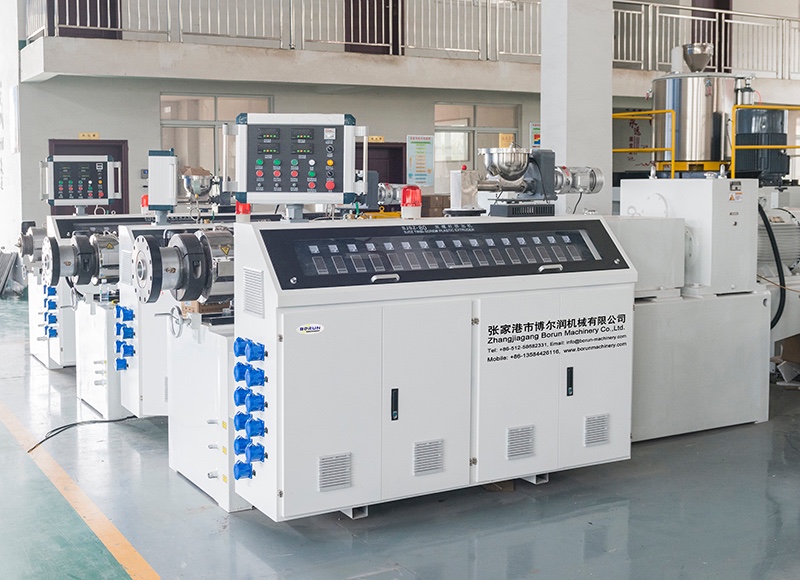- Call: +86-13584426116
- Email: info@borun-machinery.com
- Get a Quote
HDPE pipes have been used for decades in industrial piping work. High-density polyethylene began to replace metal pipes, such as lead pipes, because it does not get damaged by moisture or release residues. In fact, this material can resist the action of most acidic and alkaline substances.

How are HDPE pipes created?
The properties of polyethylene allow this material to be worked through the extrusion process. That is how hundreds of plastic objects are created around the world, including HDPE pipes.
Next, we will describe what are the steps of this process.
1. Preparation of the raw material
In order to manufacture pipes, high-density polyethylene is required in large quantities. When obtaining the raw material, it must be subjected to some tests to determine if it is suitable for use in the extruder. For example, that material must be completely dry before entering the extruder. If traces of moisture are detected, it is necessary to subject the raw material to a drying process at a temperature of 105 ° Celsius.
2. Casting of the base material
The high-density polyethylene used in extrusion machines is presented in the form of small particles called pellets. In this way, the material can be melted faster and more evenly. As part of the manufacturing procedure for HDPE pipes, the material must be preheated to speed up the work of the extruder. Once it enters the machine, it goes through a long heating chamber. When the raw material reaches the end of its route it is completely melted.
3. Molding through the extrusion head
At the end of the extruder is added a nozzle that has the desired shape and dimensions in the pipe. This piece is what determines what will be the diameter of the final tube, as well as the thickness of its walls. Thanks to the extrusion technique, hundreds of meters of pipe can be manufactured very quickly. In addition, the fact that the ducts are made as solid pieces is highlighted. Not having joints reduces the risk of having areas of less resistance.
4. Forming and calibration
When the polyethylene passes through the extrusion head it is still hot. That is, it is still in a state that is easily alterable, so it is passed to a vacuum tank. There, the plastic receives a water bath to help it quickly lose its temperature. In this cooling chamber, the interior of the HDPE pipe is sought to reach 85 °
Then, the resulting pipe is stretched at a controlled speed that together with the revolutions of a spindle influence the thickness that the HDPE pipes will have. Once all this process has finished, the product is marked according to the regulations.
5. Cutting or coiling of HDPE pipes
Thanks to the great flexibility of high-density polyethylene, it is possible for small diameter tubes to be wound into coils for sale. However, the larger pipes must be cut.
Typically, pipelines are desired to be 6 to 12 meters long, as offered by Pipe Extrusion Machine Suppliers in China.